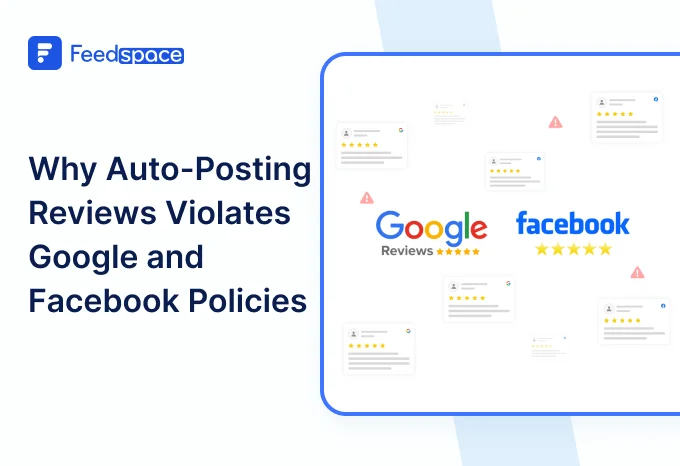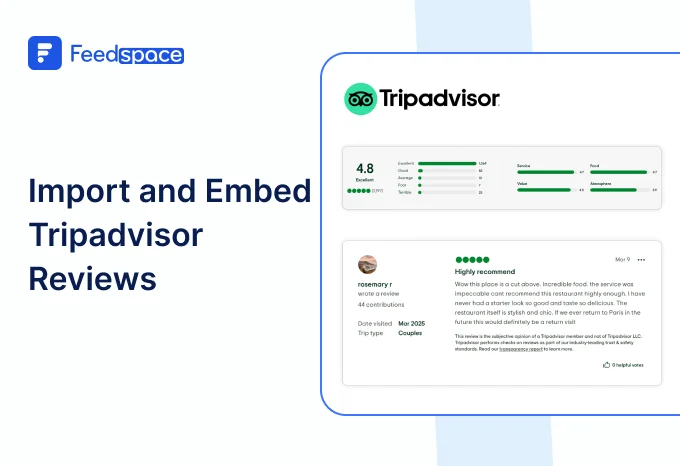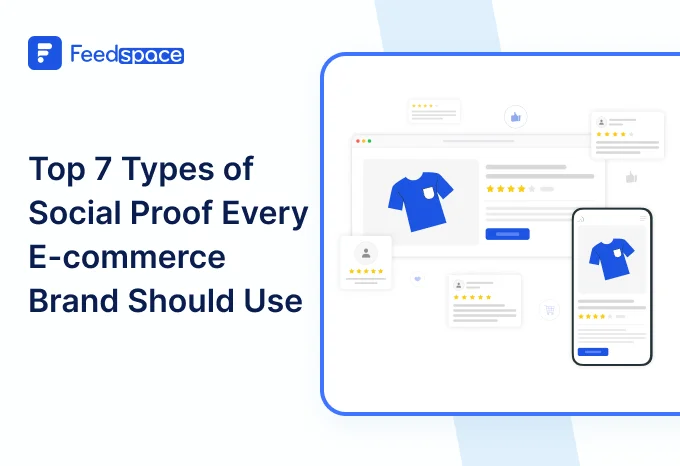Both reviews and testimonials are powerful tools to build trust and credibility for your brand. But they are not equal. Ask yourself — you’ve read many different reviews and testimonials, are all the same? Would you say they are written with the same intention?
This is why we need to understand the fundamental differences between testimonials and reviews. In simple terms reviews can be either positive, negative, or critical. However, testimonials are almost always positive with a personal endorsement underlying them.
In this guide we are going to check out the differences between testimonials and reviews, know when to use each, and understand why we need to focus on both, and how they can work together to strengthen your marketing efforts.
Testimonials VS Reviews—Let Us Dig In
What is a Testimonial?
A testimonial is a well thought out and detailed endorsement from a client sharing their experience with your product or service. And the team behind it. It is built as a story with a narrative with highlights of their objectives, the challenges they faced, and how your brand helped them address those challenges. They can be either video, audio, or text based.
What is a Review?
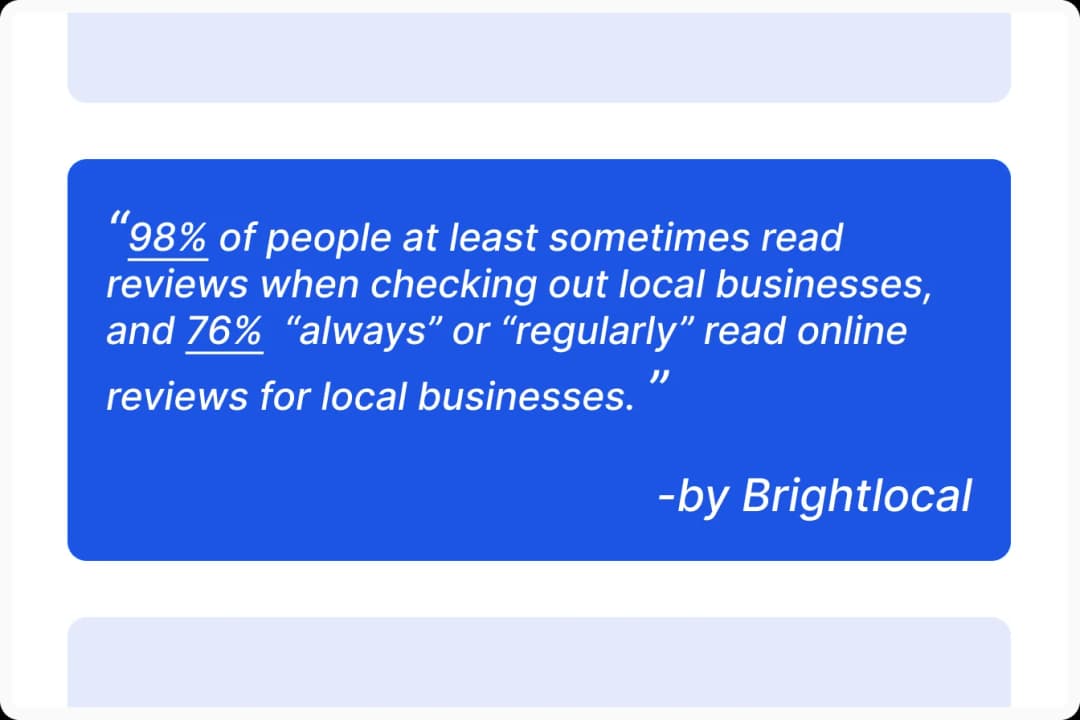
Reviews are generally shorter in length. They talk about their first hand experience mostly and don’t go into detail about things like what they were trying to solve or the process they followed while working with you.
This is why it picks a side — positive or negative. It is also possible for a review to be critical or neutral. But whatever it is, all kinds of reviews are a must for increasing the trust in your brand’s credibility.
Comparison between Testimonials and Reviews
It is evident there is a significant difference between reviews and testimonials. And they are used to collect content for different purposes. While reviews may be used to gain insight into what people think of your product; a testimonial may be used to show potential new leads how their use case has already been deployed by your business.
Comparison Table for Testimonial vs Reviews
| Feature | Testimonial | Review |
|---|---|---|
| Purpose | To share a positive, which shows personal experience with a company. | To give a quick opinion about a product or service, whether good or bad. |
| Length | Usually it is a bit long, with more details about what the customer loved and why they wish to recommend the company. | Short and on the point, with often just a few sentences or words. |
| Tone | Mostly positive, highlighting the best parts of the company, product, or service. | Can be positive, neutral, or negative, depicts an honest view of the experience. |
| Format | Written in detail, sometimes given directly to the company; often includes personal experience or examples. | Includes a star rating (1 to 5 stars) and is usually posted on different review platforms or social media. |
| Audience | Aimed at potential customers to build trust and encourage them to choose the company. | For the general public, helping people quickly understand overall customer satisfaction. |
| Impact on Business | Helps to grow credibility by highlighting strong, positive experiences directly from satisfied customers. | Gives a quick, general overview of how people feel about a business; can impact the business’s overall rating. |
| Source of Message | Often requested by the business from happy customers or clients who are willing to share their experience. | Usually voluntary and unsolicited, written by any customer who wants to share their feedback. |
| Detail Level | Provides in-depth details and specific reasons for recommending the company, adding a personal touch. | More general, summarizing the experience without going into as much detail. |
| Use for Marketing | Frequently featured on company websites, ads, or marketing materials to build trust and attract new customers. | Often visible on third-party review sites like Google Reviews, Yelp, or social media, giving a public opinion. |
When to Use Customer Reviews and Testimonials
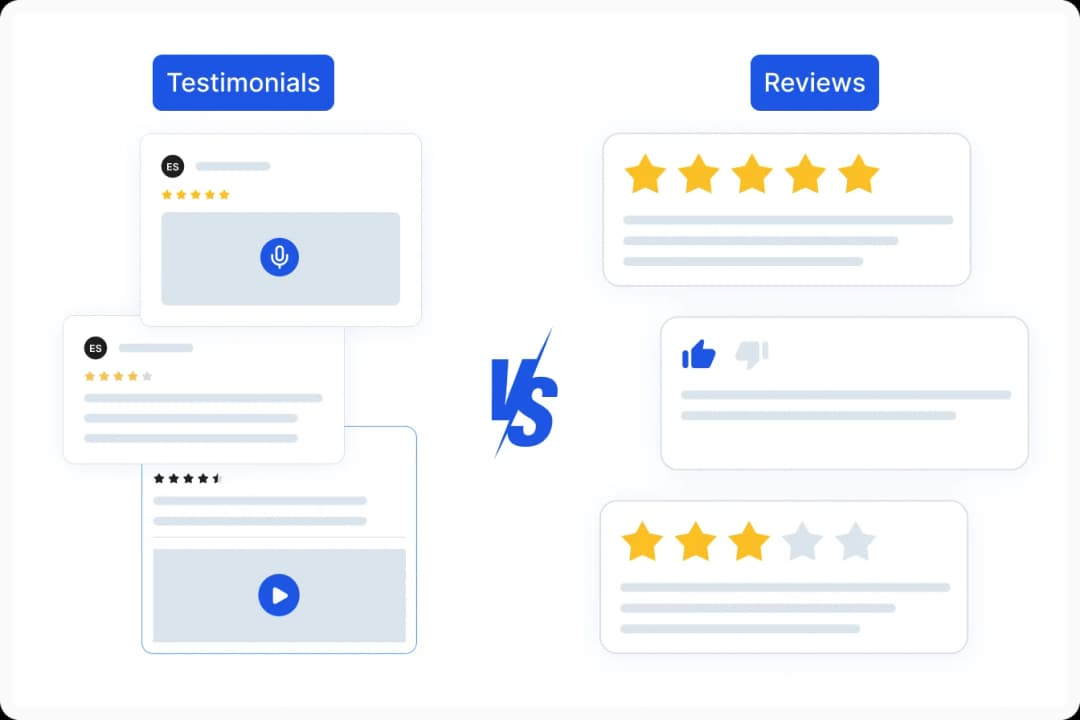
There is no one answer to this. Neither can you focus on just collecting one. We have seen brands both big and small. Whether global or local they all collect both reviews and testimonials. 66% of consumerssay that a brand with many online reviews make them trust it while dealing online. Is that surprising? Of course not.
Reviews help a customer form an opinion of a brand or a product. And testimonials can help push a decision to do business with a brand. And if you are an online business, especially if you want to leverage a local audience—local reviews and testimonials must both be collected extensively.
Use Testimonials When:
- You want to connect emotionally with your audience by designing a narrative around your service or product
- You have customers and clients willing to shell out time to write a testimonial for you. Since you do not half baked testimonials.
- You would like to use user-generated video video content in your marketing with content like video testimonials.
- You want to build long lasting relationships with your existing clients since you will feature their testimonial on your website.
- You want to show off a use case or challenge that you successfully solved. This can be done by turning the testimonial you’ve gotten into a case study and connecting both.
Customer Testimonial Examples:
- ClickUp: This page features all the love that the project management tool ClickUp has gotten from their clients. It features them as customer success stories which builds on the case studies we mentioned above. You can see how each client has mentioned their experience working with ClickUp which adds a sense of authority to each of the case studies.
- Dream Studio Course: This is a course creator who has collected testimonials from their students and featured it right on their landing page. Pretty sure this has helped drive a lot more conversions since you can see an actual person who has benefitted from the product vouch for it.
- Constant Contact: An old SaaS company all the way back from the 90s. In this testimonial video they feature small business owners and their stories using Constant Contact to manage their newsletter and campaigns.
Use Reviews When:
- You want quick and short form feedback from your users that you can feature on your website or gain insights from.
- When you want your customers to highlight and call out certain product features.
- You want to build social proof faster and help make your leads’ lives easier by providing them with decision making content.
- You are working on your SEO since Google loves honest and original content live reviews written by customers.
Customer Reviews Example:
Tallac Historic Site: This listing for a historical site features great examples of what reviews look like when they come candidly from customers. Especially when they have spelling errors or grammar mistakes in them. Which is completely fine since the customer is writing it in their words. These reviews are also featured on a leading review site called Tripadvisor from where we suggest importing your reviews since they could be deleted or removed anytime!
Rapport AI Avatars: A classic example of a listing website where people can freely discuss and talk about your product. The best part here is that you can even engage in the discussions with them. Check out these reviews and also the rating system which is another important metric on a lot of leading websites when you want to outshine your competitors or rivals.
Types of Customer Reviews and Testimonials
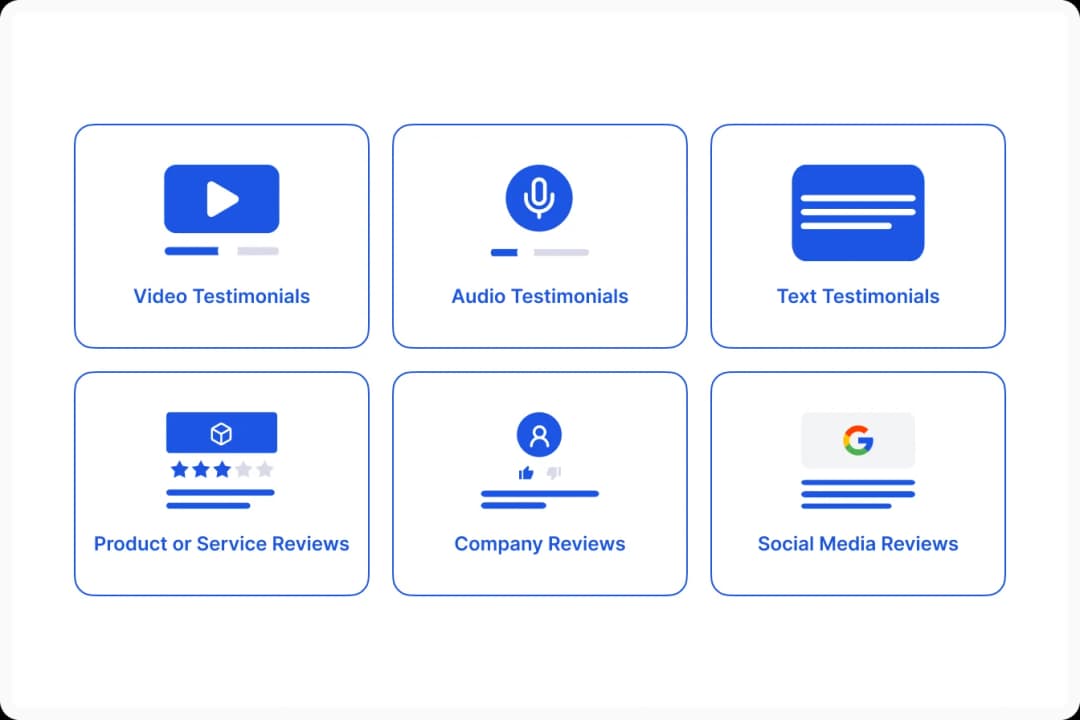
Once again there is no one size fits all. Depending on things like your target audience, where you want to feature content, how many customers you have, etc. there are different types of reviews and testimonials. Let us take a look at and understand them.
Types of Customer Testimonials
Video Testimonials
Audio Testimonials
Text Testimonials
Video testimonials are testimonials in the form of videos. These are engaging because it is a visual medium with moving pictures and audio. They are also easier to consume. Start off by exploring a bunch of different video testimonials from leading brands for inspiration. You can see how they shoot, produce, edit, and what they cover in their videos.
In the long run, video testimonials are also more memorable just like how you would remember a movie or an ad that features a person talking about something passionately.
Audio testimonials are preferred for those customers and clients who prefer not to show their faces or aren’t comfortable being on camera. They are easy to produce and require very minimal effort from the customer’s side. But these can be difficult to work with since they can’t be repurposed easily unless you create a video to accompany it or find a platform or host to help you feature it.
The classic form that we are all used to seeing and reading. They are easy to receive but require thinking and typing effort from the customer. Hence, might be a little difficult to collect. In our opinion, the best format to collect in is video since the transcript can then be converted to a text testimonial and the audio can be extracted for an audio testimonial.
3 Types of Customer Reviews
Product or Service Reviews
Company Reviews
Social Media Reviews
These are reviews that are received for a specific product or service rendered by a brand. They go into explaining whether the product worked as expected or not, or whether the service provided met expectations.
Reviews of this kind help potential consumers make better buying decisions and choose the best option they have at their disposal. And they can also be tailored to specific products and services rather than speaking for the brand as a whole.
If you have ever wondered what people think of your company or brand this is the type of review you should collect. They will give you insight into different non-product specific facets of your company like customer service, reputation, social standing, visibility, brand recall ability, and other customer experiences.
By engaging in something called social media listening you can get insight into what people are saying about you on social media. Social media reviews are also of another kind which is when you choose an influencer or a celebrity to work with and review your product. This can help reach specific audiences who are part of your niche and target.
Additionally it also gives you free content from the web that you can then repurpose as reviews for your own website and socials.
Benefits of Using Customer Reviews and Testimonials in Marketing
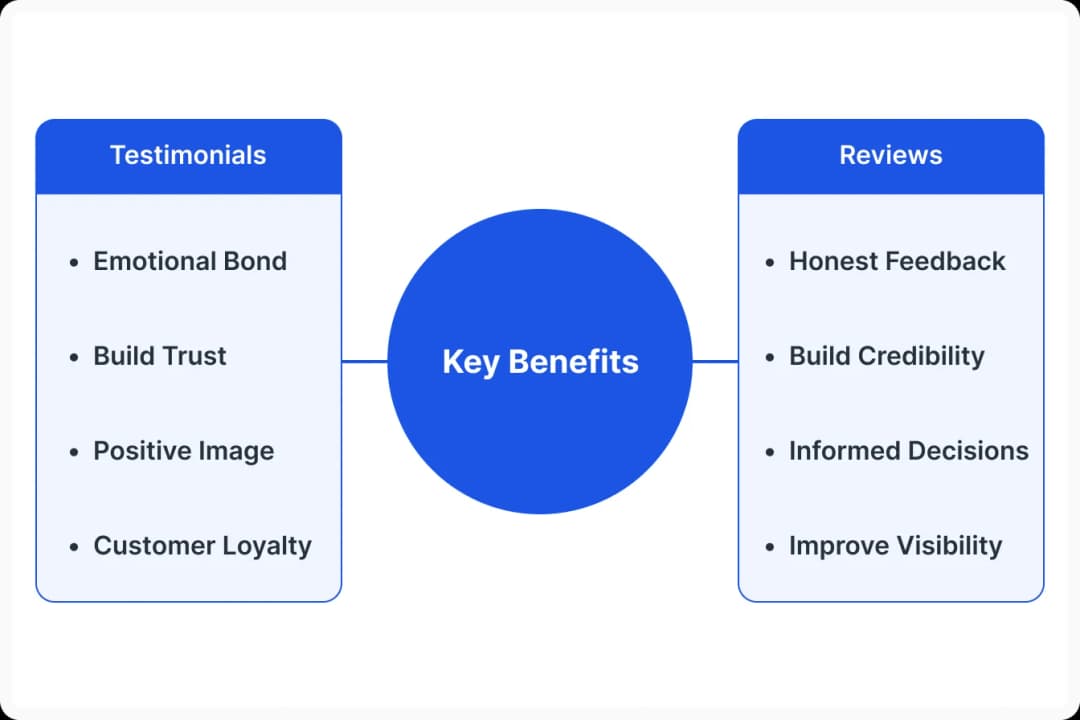
Testimonials Benefits in Marketing
Builds Emotional Connection
Testimonials are stories from your customers who talk passionately about your product. This lets them have the ability to connect emotionally with your audience.
increases Brand Trust
The trust in a brand increases as you feature actual customers and allow them to talk about your product. It shows that you aren’t afraid and already have a good reputation.
Creates a Positive Brand Image
Customer stories will show them highlighting certain parts of the product or service that you do best. This can create a positive brand image and make you a go-to for those aspects.
Reviews Benefits in Marketing
Honest Feedback:
Gives you actual honest feedback that cannot be faked without being caught on it. It shows both the positives and constructive, weaknesses and strengths, and a balanced opinion in general.
Helps Customers:
By seeing and engaging with the reviews you have, new audiences might find certain things appealing over others and get the push they need to buy your product.
Mistakes to Avoid with Reviews and Testimonials in Marketing
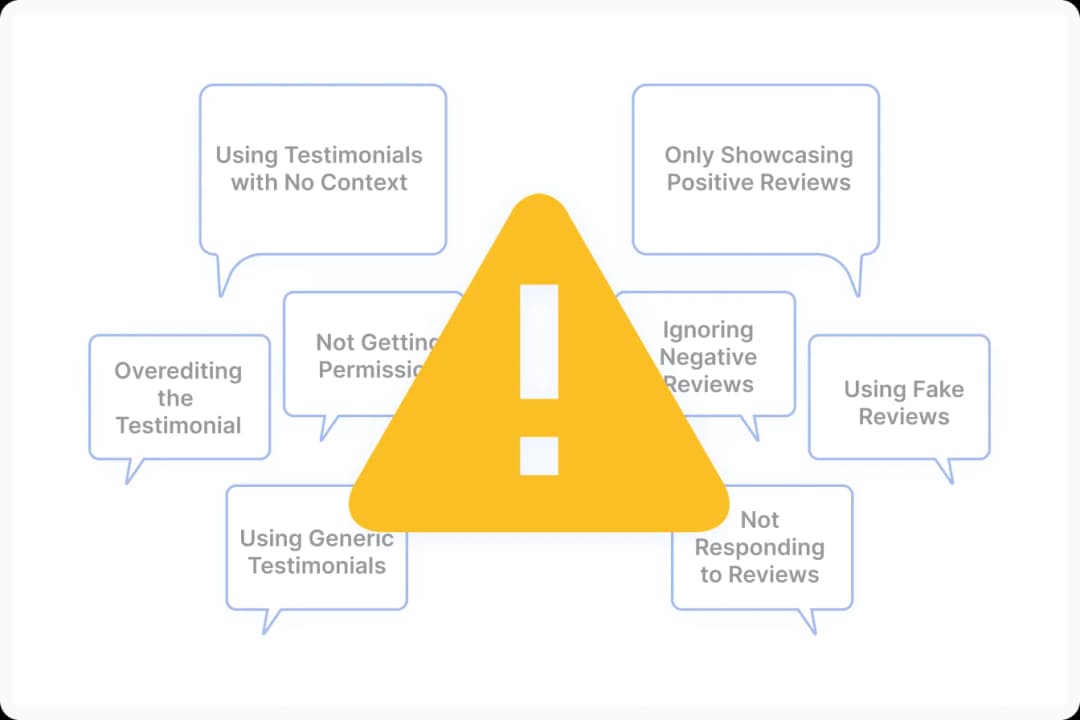
Having explained and discussed in detail the need and differences between testimonials and reviews you are probably now ready to start collecting them happily. But before you jump all in let us know what sort of mistakes we should avoid while collecting them.
Mistakes to Avoid with Testimonials
Permission and Consent:
Make sure you have explicit consent from your customers before you plaster their words all over your website and social media.
Making Too Many Changes:
Testimonials are written in your customers’ words. And you want it to still feel that way when someone else reads them. So avoid editing it too much where it is not their expression anymore.
Faking It
Don’t write testimonials by yourself and show them off as words from your customers. Even if you took permission from them to do this. Anyone can sniff them out.
Mistakes to Avoid with Reviews
Not Responding
Whether you have negative or positive reviews you must always ensure that you respond to your customers. Especially with negative reviews since it is said that 89% of users read businesses’responses to reviews and also spend up to 49% more money with them.
Faking Reviews:
Once again do not try to be fake like some businesses do by having their employees inject reviews on review platforms or paying for reviews. There are many drawbacks to this including if someone finds out your reputation gets affected, your reviews will be taken down, and you’re just being unethical in general.
Promote Your Reviews and Testimonials with Feedspace
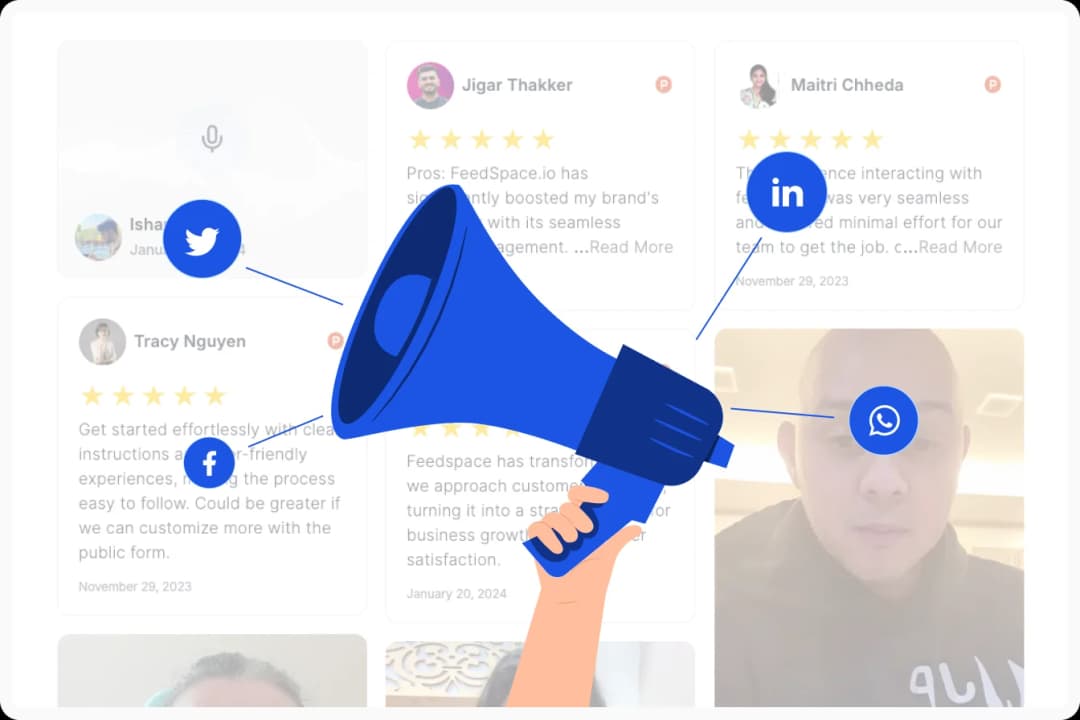
To manage your reviews and testimonials you are going to need someone. Or better yet a tool that does the job for you. When you look out in the market you’ll find that there are plenty of options — Feedspace being one of them that stands out. Did you know that 20% of consumers look at one review site before deciding? And around 59% look at more than two review sites! What if you could show all the reviews from review sites as well under your own banner and make your consumers’ lives easier?
With Feedspace you can import your existing reviews from sites like Yelp and Tripadvisor, as you saw above, how important they are to hosting reviews and building a brand. But on top of that Feedspace also lets you ask new reviews and testimonials by building forms which you can send out to your audiences. Further you can promote it by building an aesthetic showcase called a Wall of Love to feature on your website.
Sign up for a free Feedspace account today and check out what you can do with reviews and testimonials. If nothing else, you’ll at least have a large library of user-generated content at your disposal!


